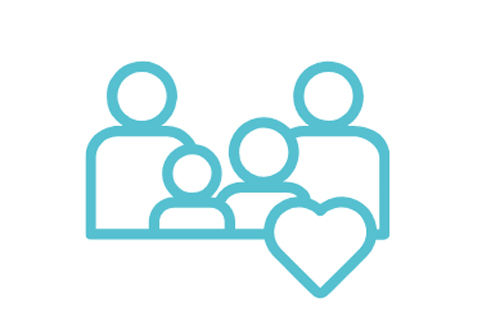Evaluation of Centrecare’s Entrypoint Outreach Program: Supporting families facing homelessness


How can we support families facing homelessness to access and sustain permanent housing?
The Centre for Social Impact UWA was engaged to evaluate Centrecare’s Entrypoint Outreach Program (EPO) — A preventative early intervention pilot funded by Lotterywest designed to stop homelessness before it occurs by diverting families and individuals away from homelessness (often in the rental housing market).
The brief intervention (2–6 weeks) targeted families who were newly homeless or were at immediate risk of homelessness in a very tight rental market.
Entrypoint Outreach Program objectives
- Prevent and reduce homelessness by lowering clients’ barriers to accessing or maintaining housing.
- Increase the speed with which accommodation could be obtained.
- Alleviate pressure on the homelessness system and mainstream housing services by diverting people away from them.
Program participation
Of the 290 contacted primary clients (e.g., an adult client in a family seeking support) who participated:
- 249 were families (86%)
- 169 were female (58%)
- 48 were Indigenous (17%)
- 72 were experiencing Family Domestic Violence (25%)
143 cases were at immediate risk of homelessness on entry, and 119 had avoided homelessness on program exit (156 adults, 232 children).
147 cases were already homeless on entry, and 86 were housed on exit (105 adults, 170 children).
In total, 950 people took part which included 370 adults and 580 children.
The state of housing and homelessness in Perth, Western Australia
Since 2021, the rental market has tightened in Western Australia with a mismatch between supply and demand resulting in low vacancy rates and high rental prices. Rent increases have become more common and larger on average, meaning there is:
- Long waiting lists for public and community housing
- High rates of homelessness and new entry into homelessness
- Historically high private rental market rents and low vacancy rates
- Cost-of-living pressures
Snapshot of outcomes
The data gathered as part of the evaluation indicated that seven key housing, individual and family and system level outcomes were achieved over the life of the pilot program, and can be viewed in the report . A snapshot of some of the outcomes are below.
Housing outcomes
Housing barriers were reduced through:
- Improved knowledge of rental search and application processes.
- Skills development, references, improved planning for rental entries/exits, increased awareness of rental inspection property standards.
- Centrecare’s advocacy with real estate agents.
1. Housing status on program entry
Before entering Centrecare's Entrypoint Outreach Program:
- 51% of people were experiencing homelessness and;
- 49% were at immediate risk of homelessness.

2. Housing status on program exit

After completing Centrecare's Entrypoint Outreach Program there was a 48% increase in permanent housing.
Of those who were at immediate risk of homelessness on entry, 83% avoided homelessness including:
- 156 adults
- 232 children
Of those who were homeless on entry, 58% exited homelessness including:
- 105 adults
- 170 children

Of 143 cases who were at immediate risk of homelessness on entry, 119 had avoided homelessness on program exit (156 adults, 232 children). Of 147 cases who were already homeless on entry, 86 were housed on exit (105 adults, 170 children).
Outcomes related to people experiencing Family Domestic Violence
Of the 290 contacted primary clients who participated, 72 were escaping Family Domestic Violence, which includes 77 adults and 149 children.
| Housing Stability | Program entry | Program exit |
|
|
|
Wellbeing Outcomes
Centrecare's Entrypoint Outreach Program was able to positively affect life trajectories through advice and information, housing support, advocacy, encouragement, guidance, life and tenancy skills development, and individual development plans.
 |  |
Extreme distress dropped from 78% of clients pre-program to 37% of clients post-program |
|
System level outcomes
1. Rapid outcomes at low cost
Average cost per support period - $2,354, compared to an estimated WA SHS expenditure of $3,015 per completed support period. Average cost per person $723 (including children).
2. Client diversion away from chronic homelessness
- Avoid high average health and justice costs.
- Low reliance on the strained public housing system or stretched homelessness support system.
Why was EntryPoint Outreach successful?
“A new low-cost early intervention approach that complements existing strategies to end homelessness.”
- Centrecare’s existing relationships with stakeholders facilitated a collaborative, networked approach.
- Centrecare’s reputation in providing effective responses to vulnerable populations.
- EntryPoint Outreach (EPO) is well regarded by community workers
- The service was individualised, flexible, and holistic.
- EPO is a holistic service.
